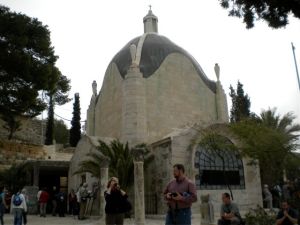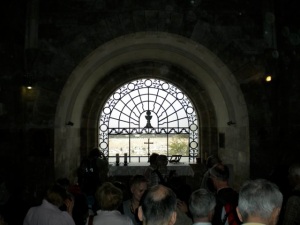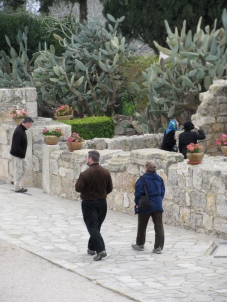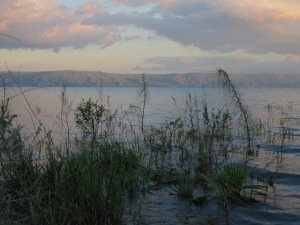 Several months ago while still in Israel/Palestine, I blogged about my trip to Ramallah in search of contemporary Palestinian art. I noted that I wanted to take my favorite piece by Maisa Azaizeh home with me. It turns out that I did in a manner of speaking… it was just a bit slower making the journey.
Several months ago while still in Israel/Palestine, I blogged about my trip to Ramallah in search of contemporary Palestinian art. I noted that I wanted to take my favorite piece by Maisa Azaizeh home with me. It turns out that I did in a manner of speaking… it was just a bit slower making the journey.
After a string of emails to various organizations, I finally was put in touch with the artist, and we began exchanging emails about the painting, how I might purchase it, and how we might get it to the United States. The exhibition traveled throughout Palestine until July 24, at which time it was free to make its way to me. It arrived in the mail today, and it is everything that I remember it.
Here is what Maisa had to say about the painting:
When i first thought about painting a piece for [the] “Palestine through the eyes of young artist” exhibition, I immediately thought about the closest issues to me, things that are haunting me in me daily life, in the streets, in my way to work, the view i see out of my window, etc… In the first glance, the painting looks as if its a panorama taken from a refugee camp, stressed and crowded, while in fact, even in the 48 Palestinian areas we notice Palestinian villages and neighbourhoods that looks like camps, since they suffer from marginalization [and] neglect, therefore, Palestinians, citizens of Israel, face limited possibilities in building and [the] confiscation of land. So, we see those places as crowded boxes, with its small details that seems not so important, but in fact they are for people (like cables, water tanks and so on..). Nevertheless, people don’t give up, don’t allow depression to enter their houses and even their air.. They still have some hope, which I highlight through the diversity of colors..









 Today’s theme was The Suffering Servant, and we visited churches and places of prayer related to Jesus’ last days, including the Garden of Gethsemane, the Syrian Orthodox Church of St. Mark (a traditional site of the last supper), and the Church of St. Peter in Galicantu (where Jesus was tried by Caiaphas and Peter denied Jesus). The first place we visited was the Church of Dominus Flevit, which is shaped like a tear drop and recalls when Jesus wept over Jerusalem. Gareth Bevan, one of our fellow pilgrims, offered the following reflection.
Today’s theme was The Suffering Servant, and we visited churches and places of prayer related to Jesus’ last days, including the Garden of Gethsemane, the Syrian Orthodox Church of St. Mark (a traditional site of the last supper), and the Church of St. Peter in Galicantu (where Jesus was tried by Caiaphas and Peter denied Jesus). The first place we visited was the Church of Dominus Flevit, which is shaped like a tear drop and recalls when Jesus wept over Jerusalem. Gareth Bevan, one of our fellow pilgrims, offered the following reflection.



